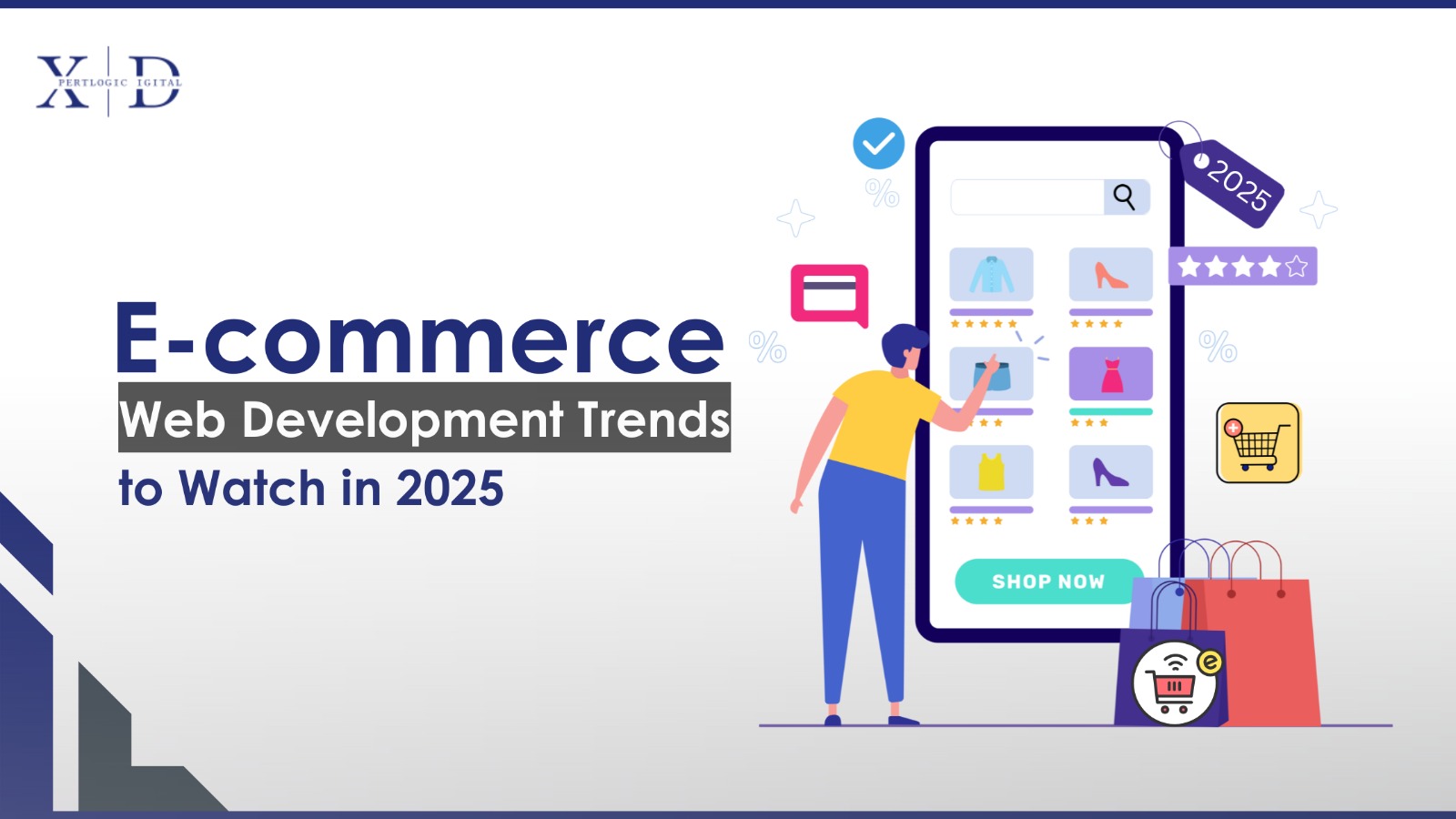
eCommerce has transformed how businesses connect with consumers, offering unparalleled convenience, personalized experiences, and access to global markets. However, the landscape of e-commerce is ever-changing, and staying ahead requires embracing the latest web development trends. By 2025, cutting-edge technologies and consumer preferences will redefine how e-commerce platforms are built and optimized.
This blog explores the top eCommerce web development trends for 2025, highlighting innovations that will shape the future of online shopping.
1. AI-Powered Personalization
Personalization has been a cornerstone of successful e-commerce, but by 2025, AI-driven personalization will take center stage. AI and machine learning algorithms will provide hyper-targeted recommendations, customized user interfaces, and dynamic pricing strategies.
Key Features of AI Personalization:
- Predictive Recommendations: AI analyzes user behavior to suggest products and content tailored to individual preferences.
- Dynamic Pricing Models: Real-time adjustments to pricing based on demand, competition, and customer behavior.
- Personalized Landing Pages: AI curates landing pages based on user profiles, increasing conversion rates.
Example: An e-commerce platform for fashion can use AI to recommend outfits based on a user’s browsing history and purchase patterns, creating a more engaging shopping experience.
2. Headless Commerce Architecture
By 2025, headless commerce will become a dominant trend in eCommerce web development. Headless commerce separates the front-end and back-end systems, offering unparalleled flexibility in delivering unique shopping experiences.
Benefits of Headless Commerce:
- Custom Front-End Development: Developers can create custom user interfaces that align with a brand’s identity without being tied to a specific back-end system.
- Omnichannel Integration: Seamlessly integrate shopping experiences across websites, mobile apps, social media, and IoT devices.
- Faster Updates: Headless architecture enables quick updates and feature rollouts, keeping the platform competitive.
Example: A retailer using headless commerce can launch a flash sale on its website, mobile app, and smart speaker app simultaneously, ensuring a consistent experience across all channels.
3. Voice Commerce and Conversational Interfaces
With the rise of voice assistants like Alexa, Siri, and Google Assistant, voice commerce is set to revolutionize how consumers shop online. By 2025, e-commerce platforms will integrate voice-enabled features to provide a hands-free shopping experience.
Applications of Voice Commerce:
- Voice Search Optimization: Enabling users to find products using natural language queries.
- Conversational Commerce: Integrating AI chatbots for voice-based product recommendations and support.
- Voice Checkout: Allowing customers to place orders and complete transactions using voice commands.
Example: A grocery e-commerce site can allow users to add items to their cart or reorder past purchases using voice commands, enhancing convenience and speed.
4. Progressive Web Apps (PWAs)
Progressive Web Apps (PWAs) are bridging the gap between websites and mobile apps, offering a seamless experience across devices. By 2025, PWAs will dominate e-commerce platforms due to their speed, offline capabilities, and cost-effectiveness.
Advantages of PWAs for E-commerce:
- Faster Load Times: PWAs are optimized for speed, reducing bounce rates and improving user experience.
- Offline Access: Users can browse and add items to their cart even without an internet connection.
- Cost-Effective Development: PWAs eliminate the need for separate native apps, reducing development costs.
Example: A home décor store using a PWA allows customers to explore products offline and sync their cart when they reconnect to the internet.
5. Sustainability-Focused Designs
Consumers are becoming increasingly eco-conscious, and e-commerce platforms must reflect this shift by 2025. Sustainable web design will prioritize eco-friendly hosting, lightweight pages, and transparent supply chains.
Elements of Sustainable E-commerce Design:
- Green Hosting Solutions: Using data centers powered by renewable energy to reduce carbon footprints.
- Minimalist User Interfaces: Designing lightweight websites that consume less energy.
- Transparent Practices: Showcasing eco-friendly products and supply chain practices.
Example: An online marketplace highlights its commitment to sustainability by integrating carbon impact calculators for purchases and using eco-friendly hosting.
6. Enhanced Security Measures
As cyber threats evolve, ensuring data security and privacy will be a top priority in 2025. E-commerce platforms will adopt advanced security protocols to protect sensitive customer information and build trust.
Security Trends in 2025:
- AI-Driven Threat Detection: AI systems detect and mitigate threats in real-time, preventing data breaches.
- Blockchain-Based Payments: Decentralized systems provide secure and transparent payment processing.
- Multi-Factor Authentication (MFA): Enhanced security for user accounts with biometric or device-based authentication.
Example: A luxury e-commerce site integrates blockchain for secure payment processing, ensuring fraud-free transactions.
7. Augmented Reality (AR) and Virtual Reality (VR)
AR and VR are transforming how consumers interact with products online, providing immersive shopping experiences. By 2025, AR/VR features will become standard for industries like fashion, furniture, and beauty.
AR/VR Applications in E-commerce:
- Virtual Try-Ons: Allowing users to visualize clothing, accessories, or makeup in real-time.
- Room Visualization: Enabling shoppers to see how furniture or home décor will look in their space.
- Interactive Experiences: Creating virtual showrooms or guided tours for a more engaging experience.
Example: A beauty retailer uses AR to let customers try on different shades of lipstick through their smartphone camera before making a purchase.
8. Hyper-Personalized Marketing
Marketing strategies in 2025 will focus on hyper-personalization, leveraging AI and data analytics to target customers with precise messaging.
Trends in Hyper-Personalized Marketing:
- Real-Time Offers: Dynamic discounts and promotions based on user activity.
- Location-Based Recommendations: Using geolocation data to suggest nearby deals or events.
- Behavioral Triggers: Sending notifications or emails triggered by specific user actions.
Example: An online bookstore sends personalized recommendations and discounts based on a user’s recent browsing history and purchase patterns.
9. Subscription-Based Models
Subscription services are gaining popularity, and by 2025, e-commerce platforms will adopt flexible subscription models to retain customers and ensure recurring revenue.
Subscription Model Innovations:
- Customizable Subscriptions: Allowing users to adjust delivery schedules or product preferences.
- Tiered Plans: Offering different levels of benefits based on subscription tiers.
- AI-Optimized Deliveries: Using AI to predict user needs and suggest subscription updates.
Example: A meal kit delivery service offers customizable subscription plans based on dietary preferences and family size, ensuring customer satisfaction.
10. Cross-Border E-commerce Growth
Globalization will drive cross-border e-commerce, with platforms optimizing their sites for international customers. By 2025, localization and efficient logistics will be essential for global success.
Strategies for Cross-Border Success:
- Localized Content: Translating websites into multiple languages and adapting content to cultural preferences.
- Multi-Currency Support: Allowing customers to pay in their local currency.
- Efficient Shipping Solutions: Partnering with global logistics providers for fast, cost-effective delivery.
Example: An electronics retailer integrates local payment gateways and offers region-specific promotions to boost international sales.
11. Data-Driven Insights for Decision-Making
Data analytics will become even more critical in e-commerce by 2025, enabling businesses to make smarter decisions and optimize operations.
Data Trends for 2025:
- Predictive Analytics: Forecasting trends and demand based on historical data.
- Customer Segmentation: Identifying key customer groups for targeted campaigns.
- Inventory Optimization: Using data to maintain optimal stock levels.
Example: An e-commerce platform uses predictive analytics to forecast holiday sales demand, ensuring sufficient inventory and timely delivery.
Conclusion: The Future of eCommerce Web Development
The e-commerce industry in 2025 will be shaped by technological innovation, customer-centric design, and sustainability. Businesses must adopt these trends to remain competitive, providing seamless, secure, and engaging shopping experiences.
By embracing AI-powered personalization, voice commerce, headless architecture, and other innovations, e-commerce platforms can thrive in an increasingly digital-first world. Staying ahead of these trends ensures not just survival but success in the ever-evolving e-commerce landscape.
The future is here, and the time to act is now. Transform your e-commerce platform today to lead the market tomorrow.


